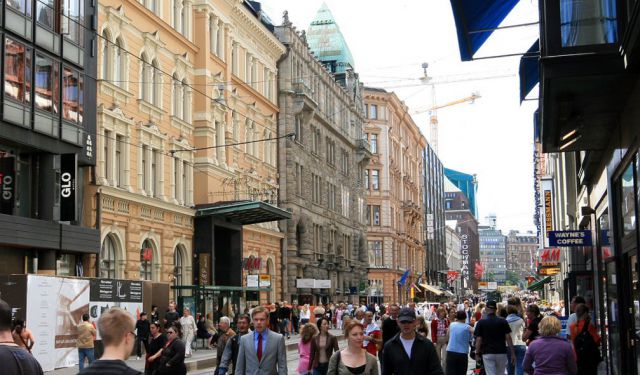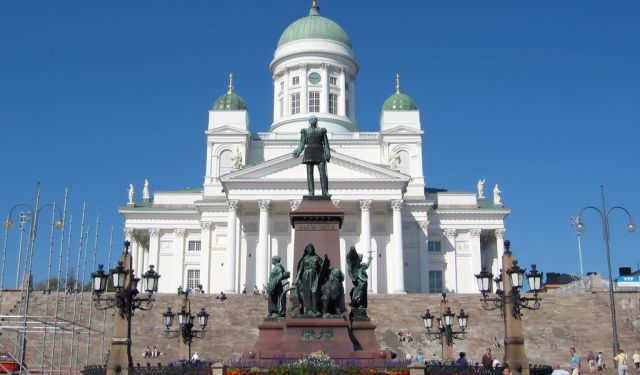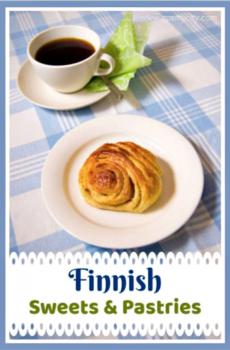
Finnish Sweets and Pastries
The country of thousands of lakes and the magical homeland of Santa Claus, Finland is also a major producer of quality chocolate and many other sweet delights without which surviving long winter nights in this Nordic part of Europe would have been far too boring. Big on coffee, the Finns love their pastries to pair with it and sure know how to make them well utilizing to their best ability the profuse supply of wild berries they gather during summer. If you like Finnish sauna, you may just as well love their sweets!
(To visit the venues mentioned in this article, check out these Self-Guided Walking Tours in Helsinki)
Image Courtesy of: Neurovelho
1. Korvapuusti (Cinnamon and Cardamon Buns)
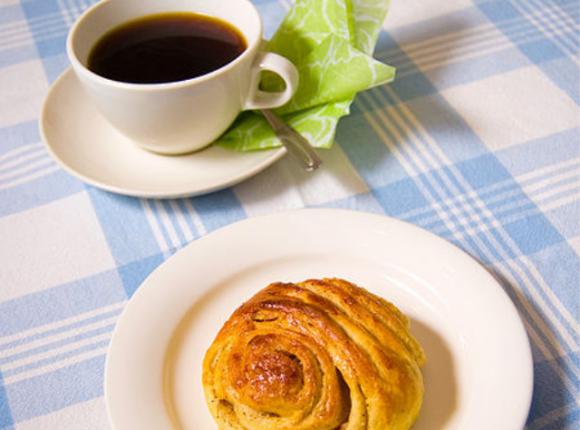.jpg)
Image Courtesy of: Neurovelho
Korvapuusti (Finnish for "slapped ears") are essentially perfectly baked sweet buns of cinnamon and cardamon-spiced yeasted dough with plenty of butter, generously sprinkled with pearl sugar on top! Quite similar to the American cinnamon rolls, korvapuusti are not exactly the same – they are simpler to make and, in some opinions, taste better. Their lovely smell makes them an ideal pair for a nice cup of coffee!
2. Leipäjuusto (Bread Cheese)
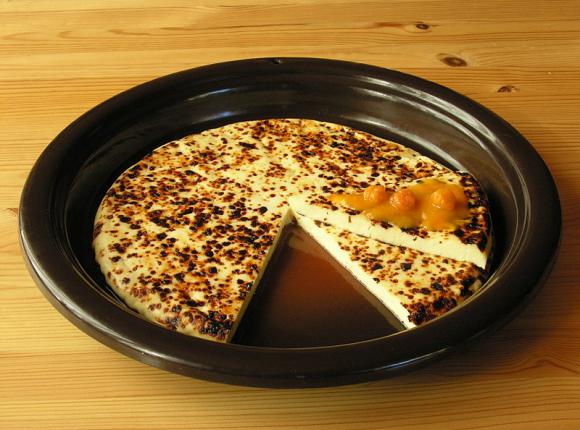.jpg)
Image Courtesy of: Teemu Rajala
Leipäjuusto or Juustoleipä ("cheese bread" or "bread cheese"), also commonly referred to as the "Finnish Squeaky Cheese," is a several centimeter-thick circle of cheese baked over an open fire. Most often it is made of cow’s milk, but sometimes reindeer's or goat’s milk is also used. This mild bread cheese boasts a very unique texture, to attain which the milk is first curdled and then fried or baked in a pie tin, upon which it is cut to wedges. Leipäjuusto is traditionally eaten with a cloudberry jam, but nowadays strawberry or raspberry jams are also applied quite often, producing a great sweet and sour combination. A weird thing is that, back in the day, it was such a valued delicacy in Finland, that oftentimes, seasonal workers in the field would get their wages paid in-kind with bread cheese. Today, the dish is still very much popular, often eaten as a dessert, cold or hot, paired well with coffee!
3. Christmas Stars/ Joulutorttu (Christmas Tarts)
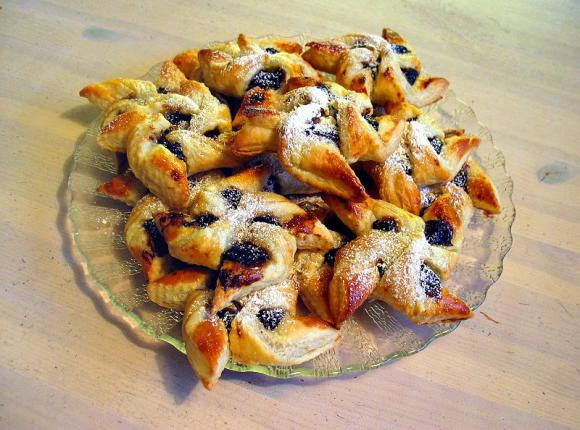.jpg)
Image Courtesy of: Mysid
Just as the name suggests, these puff, star-shaped delights, filled with jam (usually plum or apple jam) and dusted with sugar, are meant for Christmas and are part of a traditional Christmas dinner. The Finns usually make them at home by cutting squares out of pastry dough, placing jam in the middle, and then folding it gently in the form of a Christmas star, ready for baking. Typically, this is done in December all over Finland, with the aroma of freshly-baked pastries stretching far and wide, bringing everyone into the Christmas spirit, eager for a feast!
4. Runeberg Torte
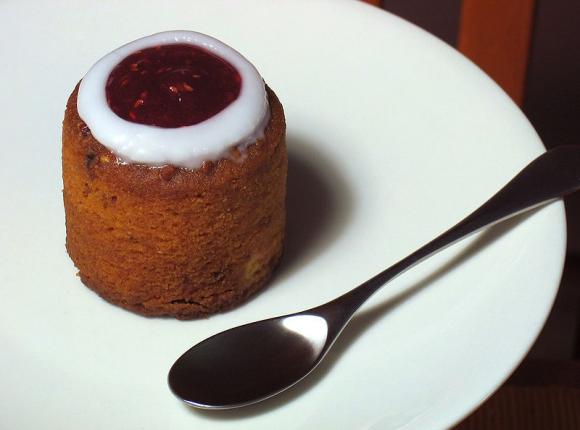
Image Courtesy of: Ville Koistinen
Runeberg torte is a singular Finnish delicacy that is largely unknown anywhere else outside Finland. It is named after Johan Runeberg, a national poet and author of the country's anthem, who reportedly was a great fun of the cake and enjoyed it every morning with a bit of punsch. This cylinder-shaped "tall muffin" usually comes soaked in either rum or arrack, and crowned with a signature raspberry jam topping, surrounded with a ring of sugar ice. The torte has a rich flavor with the hints of almond, cardamom, cream, and cinnamon. This popular pastry is seasonal and becomes available only once a year, for a short period between the New Year and Runeberg Day (the guy's birthday on February 5), so you better be in a hurry to enjoy it while you can!
5. Salmiakki
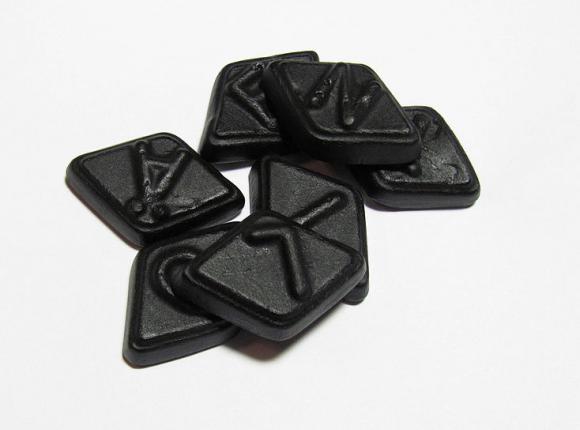
Image Courtesy of: Kulmalukko
Odd as it may seem, salmiakki ("salty licorice") is the most popular Finnish sweet. While the majority of foreigners openly hate it, the locals simply can’t get enough of it, putting it everywhere they see fit, from hard liquor (salmiakki-flavored vodka or rye brandy) to ice cream. Similar to black licorice in terms of color and flavor, in essence, salmiakki is the salt ammonium chloride shaped as a candy (as to why is it black, is still unclear). The canonical shape of the candy is a four-cornered lozenge. A definite must-try for those genuinely interested in the Finnish culture!
6. Pulla
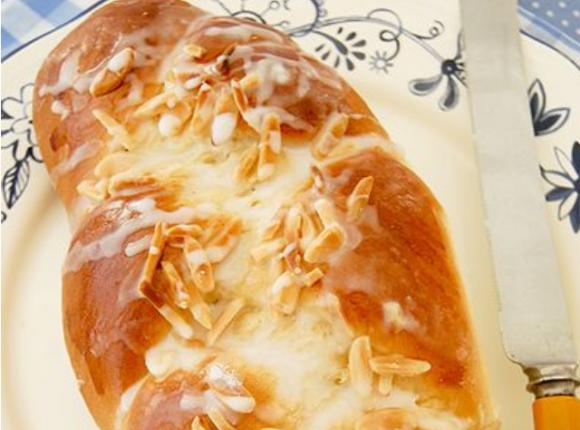
Image Courtesy of: Julia
The Finnish version of a cinnamon roll looks more like a small loaf of bread ("pitko") formed by three or more braided strands of dough; sometimes, the braids may also form a ring. Baked as a loaf or in a Bundt cake pan for three hours, these braided strands or rings are typically coated with egg wash, milk or a mixture of sugar and brewed coffee for a shiny brown glaze (dark roast is called "tummapaahto" and pale - "kalpii"), and then sprinkled with crushed cardamon seeds and, occasionally, raisins, sliced almonds or chopped walnuts, or coated in vanilla icing. Commonly referred to as "pulla" in Finland, this mildly-sweet cardamon bread may be further enhanced with whipped cream and jam filling (a round bun, baked in oil, is called "munkki"), or infused with butter and frosted with sugar ("voisilmäpulla"), or adorned with berries and filled with curd ("rahkapulla"), or deep fried for May Day. There are also smaller, round types of pulla, resembling English scones, with a sugar and butter topping, as well as larger cinnamon rolls called "korvapuusti". Regardless of the size and coating, any pulla makes an ideal companion for a cup of coffee or tea. Pitko is typically served in thin slices, while a small pulla is served whole.
7. Mustikkapiirakka (Blueberry Pie)
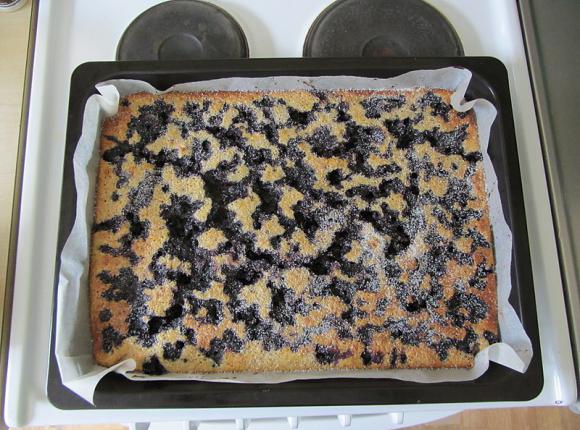.jpg)
Image Courtesy of: Anneli Salo
Mustikkapiirakka ("blueberry pie") is definitely a summer pie. In July-August, the Finnish forests and parks are flooded with all kinds of berries – blueberries, bilberries, lingonberries, cloudberries, etc. – adding much color to the scene. And the locals sure know how to deal with such an abundance: they harvest and freeze them for winter, or put them to a good use right away in the form of homemade pies. The simplest way to make a blueberry pie is by taking a simple short crust pastry, laying it on a pie baking round, mixing frozen blueberries with powdered sugar and potato flour, putting them on top of the pastry, and baking it till the crust is ready. If need be, blueberries can be replaced with raspberries, bilberries, carrots or apples. Yummy all the same!!!
8. Mämmi (Easter Pudding)
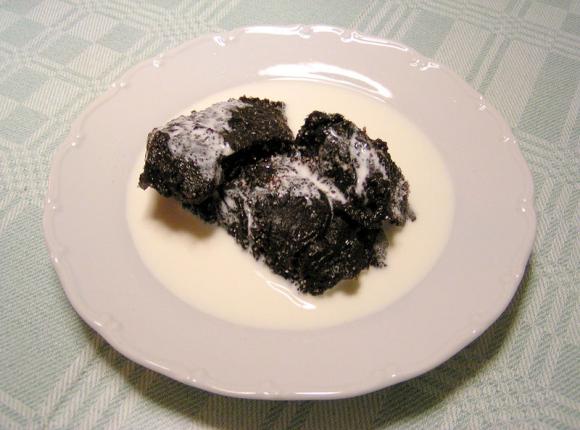.jpg)
Image Courtesy of: Strangnet
Mämmi is a traditional Finnish Easter dessert made of water, rye flour, and powdered malted rye (baked rye flakes flavored with molasses), seasoned salt, and dried, powdered Seville orange zest. Its preparation is a lengthy process, during which the mixture is first left to rest, so as to allow natural sweetening to take place slowly (contrary to the commercially made mämmi, which is seasoned with dark molasses), followed by baking in an oven until the Maillard reaction occurs. After the baking is complete, mämmi gets chilled for three-four days before it is ready to eat. Usually, mämmi is taken cold with either milk or whipped cream and sugar, or sometimes with vanilla sauce (ice cream with cloudberry jam). Back in the day, they used to spread it over a slice of bread. To some foreign eye this velvety Finnish pudding may look unappetizing, but it's darn good delicious.
9. Sultsina (Rye Flatbread)
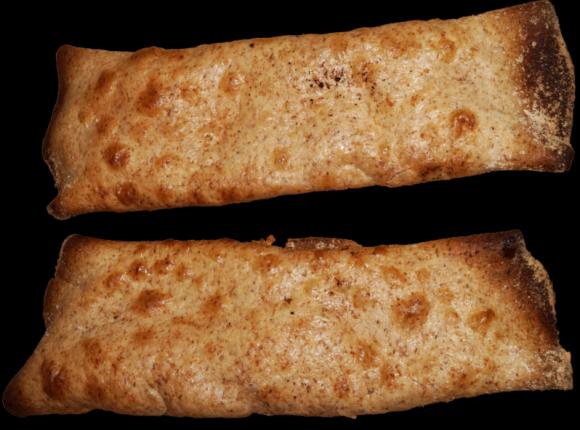.jpg)
Image Courtesy of: Tiia Monto
Sultsina is a traditional Karelian pastry, a cross between a French crêpe and a flatbread, typically fried (straight on a clean burner or in a dry frying pan or griddle, on a relatively high heat) just before serving. It is made of stiff, unleavened rye dough (formed by mixing rye flour and water and rolling to form thin circles) and farina ("mannapuuro") filling; sometimes, rice porridge is used for filling as well. Once baked, the pastry gets basted on each side with melted butter or a mixture of melted butter and water, and then stacked on one another. The filling is then spread over, leaving the edges exposed, and the whole thing is folded, bringing one side to the middle and the other side over it. The sultsina is then cut in half. Best eaten fresh, this typical Karelian snack, cheap and tasty, is simply great to warm you up on a cold winter day!
10. Piparkakku (Gingerbread Cookies)
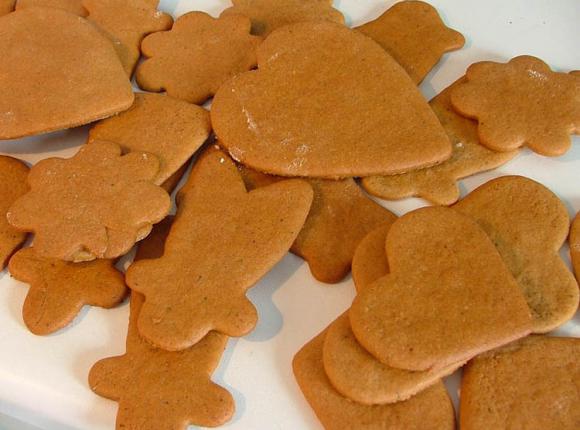.jpg)
Image Courtesy of: Jonik
Widely popular throughout the Scandinavian world and the neighboring Nordic/Baltic states, these ginger cookies go by many names, translating from the local languages to "ginger nuts", "brown biscuits" or "pepper cookies". Regardless of the names, the essence of these cookies remains the same – rolled thin (less than 3 mm (1/8-inch)), cut into shapes, smooth and crisp. In some cases, Finnish-made gingerbreads are more strongly flavored than their foreign counterparts. The most pronounced scents in their aroma are clove, nutmeg, cinnamon and cardamon, with the actual ginger being not so prominent. Gingerbread cookies are inseparable part of the Christmas celebration in Finland. Many of the locals particularly enjoy them with warm glögi (mulled wine).
11. Laskiaispulla (Shrove Bun)
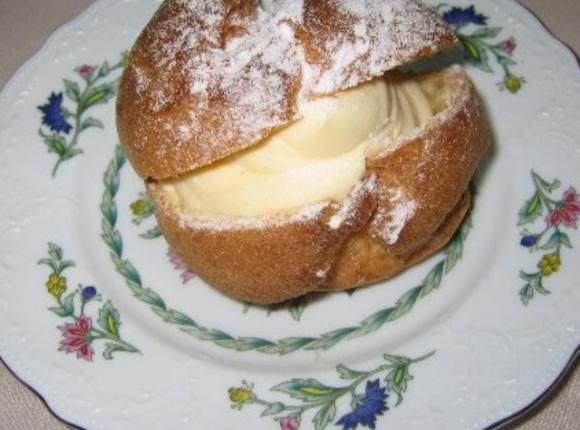.jpg)
Image Courtesy of: Gogo
Laskiaispulla is a typical seasonal pastry, well-known in all the Nordic states, traditionally served throughout the Shrove week, especially on Shrove Tuesday ("Laskiainen") when baking and eating it symbolically brings the sweetness of this treat to a whole new level. Most commonly, this soft, cardamon-spiced wheat bun is cut in half and filled with lots of whipped cream and some strawberry (or raspberry) jam or, sometimes, marzipan/almond paste instead. Ideally, it should be enjoyed with a glass of cold milk or a cup of hot coffee or chocolate.
12. Voisilmäpulla (Butterbun)
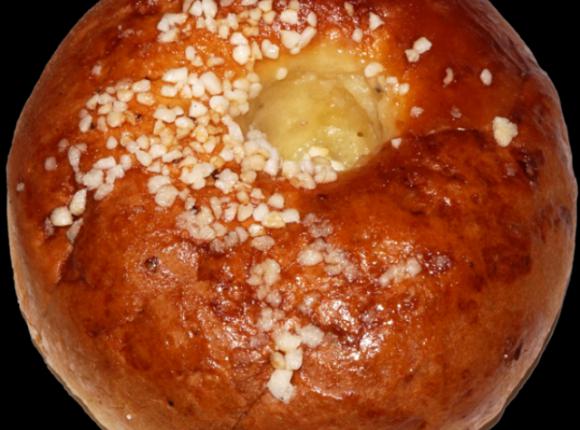.jpg)
Image Courtesy of: Tiia Monto
The word "pulla" means "bun" in Finnish, and if you add some butter to it prior to baking, thus creating a delicious sweet buttery center, it will become voisilmäpulla. These buttery buns with cardamon are a staple Nordic treat. Some of them contain cinnamon, some have more butter than the others, some carry extra sugar on top, or have a whipped cream on the inside. The common and perhaps weird thing about them all is that, apart from being extremely delicious and elegant, they also seem to almost whisper in your ear, "Eat me!"
13. Fazer Sweets
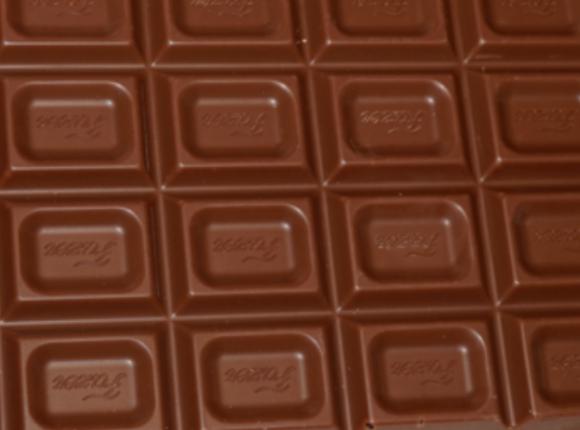
Image Courtesy of: Tiia Monto
A broad range of delights, from regular candies to snack bars to specialty gift boxes to, ultimately, Karl Fazer Milk Chocolate, commonly known as Fazer Blue, is what makes the Fazer corporation a flagship of Finland's confectionery industry, an inseparable part of the country's cultural heritage and gastronomic tradition. The latter is particularly true of Fazer Blue chocolate whose name derives from its iconic blue color wrapper, a registered trademark of the Fazer corporation. This chocolate is a top seller among sweets in Finland, owing its popularity largely to the unique taste resulting from the higher milk concentration attained by generous use of fresh milk in its production, as opposed to the powdered/condensed milk commonly used these days in chocolate manufacturing.
14. Ahvenanmaan Pannukakku
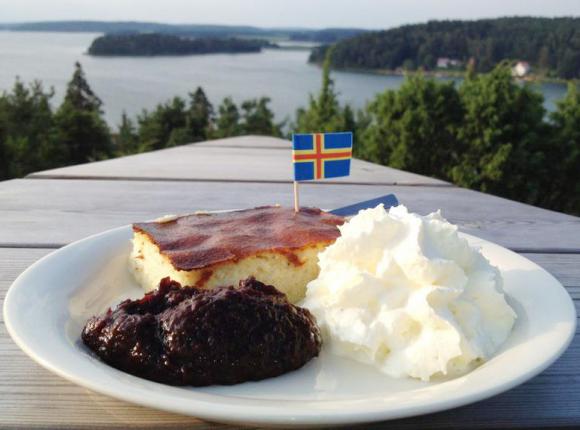
Image Courtesy of: Toyah
This large, extra thick oven-baked pancake is as much Swedish as it gets in Finland, originated in the Swedish-speaking province of Åland Islands, off the coast of Finnish mainland, where it is commonly known as ålandspannkaka (a "pancake of Åland"). Surprisingly enough, this admittedly heavenly desert, quite often referred to as a "baked custard pie", is as much popular with the locals as it is with tourists despite the fact that it is made of leftovers - wheat semolina (manna) or rice porridge (used as a base for batter), for which purpose the cold porridge is first heated and thinned out with milk, then enriched with eggs, sugar and spices (cardamon, saffron or cinnamon), and then poured in a wide oven pan and baked. The pancake is usually served lukewarm, with a hearty dash of whipped cream on the side and – the magic ingredient – stewed prunes or fruit compote, jam, berries, etc. Apart from being a great accompaniment to an afternoon coffee, Åland pancake makes an ideal snack for the hard-pedaling cyclists who swarm the islands in summer and often find themselves in much need of a calorie refill!
Get GPSmyCity App for IOS or Android
You can read offline thousands of travel articles like this one in the "GPSmyCity: Walks in 1K+ Cities" app on Apple App Store or Google Play Store. The apps also offer city offline maps and GPS navigation to guide you to the places featured in the articles.
Walking Tours in Helsinki, Finland
Create Your Own Walk in Helsinki
Creating your own self-guided walk in Helsinki is easy and fun. Choose the city attractions that you want to see and a walk route map will be created just for you. You can even set your hotel as the start point of the walk.
Finnish Souvenir Shopping Tour
When in Helsinki, souvenir shopping can be an exciting adventure allowing you to bring home a memorable piece of Finland worth having in your household. Depending on your inclinations, these could include sauna bucket and ladle, traditional Finnish music instruments, hand-woven long-tufted rugs (ryija), Finnish vodka made from Arctic-grown berries, or something else.
Those in the know can give... view more
Tour Duration: 1 Hour(s)
Travel Distance: 1.9 Km or 1.2 Miles
Those in the know can give... view more
Tour Duration: 1 Hour(s)
Travel Distance: 1.9 Km or 1.2 Miles
Helsinki's Historical Churches
Because of Finland's former affiliations with neighboring Sweden and Russia, it's no wonder that the religious tapestry of Helsinki is dominated by Lutheran and Orthodox churches. Nonetheless, there are also some beautiful architectural expressions of other Christian denominations like Anglican and Catholic to be found in the city, each holding a special place in its religious narrative.... view more
Tour Duration: 2 Hour(s)
Travel Distance: 3.0 Km or 1.9 Miles
Tour Duration: 2 Hour(s)
Travel Distance: 3.0 Km or 1.9 Miles
Helsinki Introduction Walking Tour
Helsinki was created as a trading town by Swedish King Gustav I in 1550, but it is believed that Swedish settlers had arrived here in the 1300s. Sometimes called the “Daughter of the Baltic,” Helsinki is a port town through and through. Its close connection to its Baltic neighbors, Sweden and Russia, has shaped its history for better and worse over the last 400 years. Both Finnish and Swedish... view more
Tour Duration: 2 Hour(s)
Travel Distance: 3.1 Km or 1.9 Miles
Tour Duration: 2 Hour(s)
Travel Distance: 3.1 Km or 1.9 Miles

